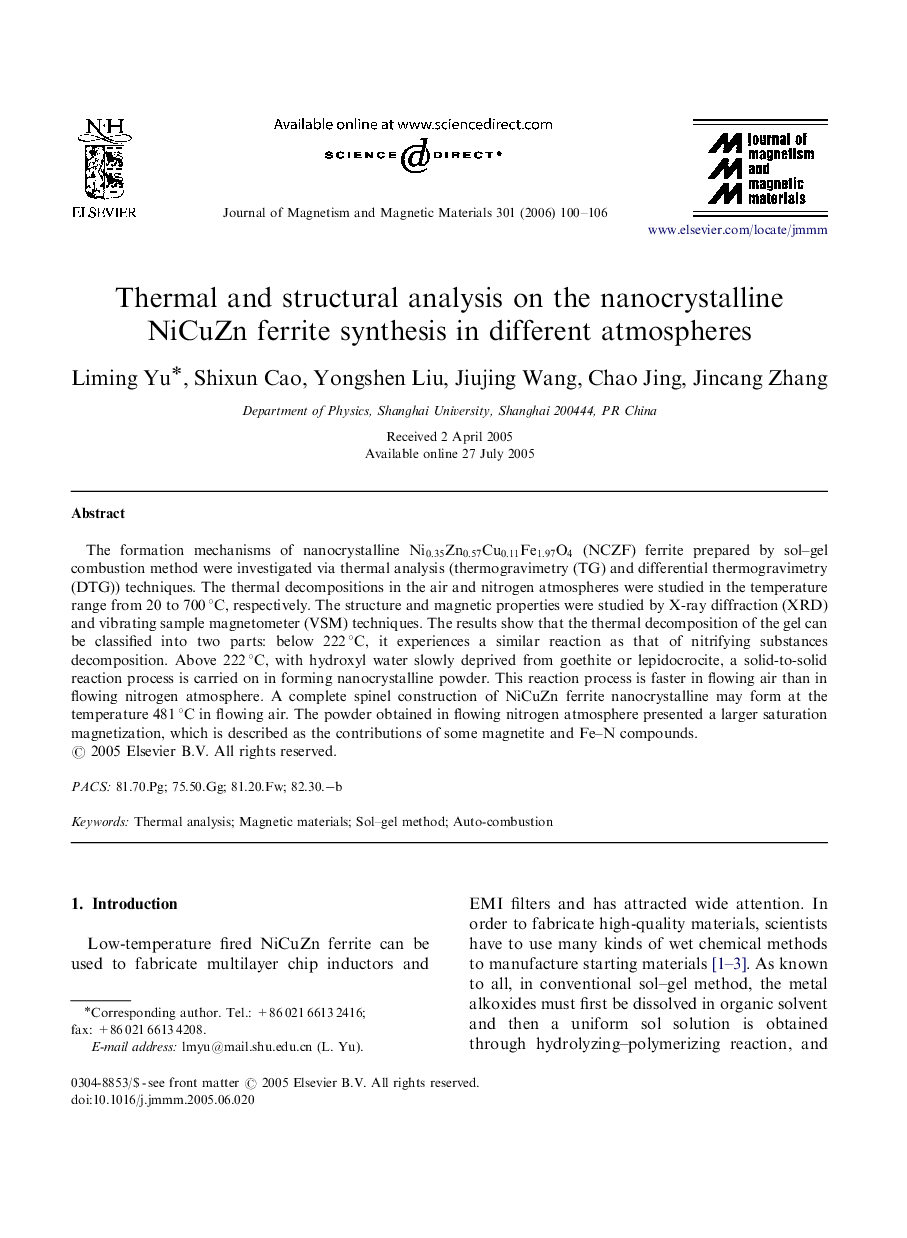| Article ID | Journal | Published Year | Pages | File Type |
|---|---|---|---|---|
| 1805319 | Journal of Magnetism and Magnetic Materials | 2006 | 7 Pages |
The formation mechanisms of nanocrystalline Ni0.35Zn0.57Cu0.11Fe1.97O4Ni0.35Zn0.57Cu0.11Fe1.97O4 (NCZF) ferrite prepared by sol–gel combustion method were investigated via thermal analysis (thermogravimetry (TG) and differential thermogravimetry (DTG)) techniques. The thermal decompositions in the air and nitrogen atmospheres were studied in the temperature range from 20 to 700 °C, respectively. The structure and magnetic properties were studied by X-ray diffraction (XRD) and vibrating sample magnetometer (VSM) techniques. The results show that the thermal decomposition of the gel can be classified into two parts: below 222 °C, it experiences a similar reaction as that of nitrifying substances decomposition. Above 222 °C, with hydroxyl water slowly deprived from goethite or lepidocrocite, a solid-to-solid reaction process is carried on in forming nanocrystalline powder. This reaction process is faster in flowing air than in flowing nitrogen atmosphere. A complete spinel construction of NiCuZn ferrite nanocrystalline may form at the temperature 481 °C in flowing air. The powder obtained in flowing nitrogen atmosphere presented a larger saturation magnetization, which is described as the contributions of some magnetite and Fe–N compounds.
